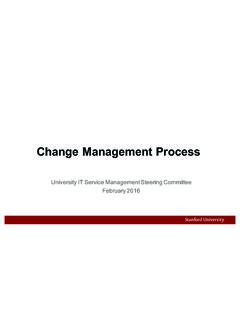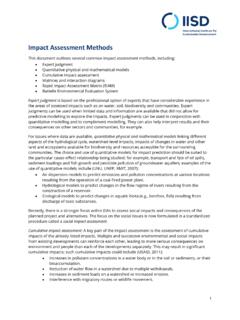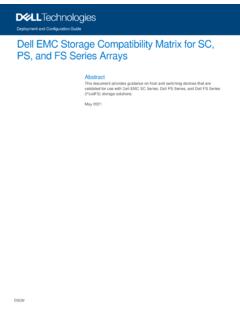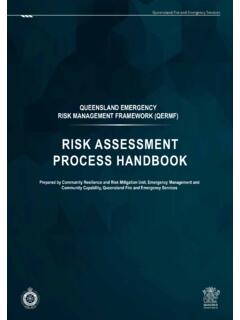Transcription of Guide to the Software Engineering - IEEE Computer Society
1 Guide to the Software Engineering Body of KnowledgeVersion A Project of the IEEE Computer SocietyGuide to the Software Engineering Body of KnowledgeVersion Bourque, cole de technologie sup rieure ( TS)Richard E. (Dick) Fairley, Software and Systems Engineering Associates (S2EA)Copyright and Reprint Permissions. Educational or personal use of this material is permitted without fee provided such copies 1) are not made for profit or in lieu of purchasing copies for classes, and that this notice and a full citation to the original work appear on the first page of the copy and 2) do not imply IEEE endorsement of any third-party products or services. Permission to reprint/republish this material for commercial, advertising or promotional purposes or for creating new collective works for resale or redistribution must be obtained from IEEE by writing to the IEEE Intellectual Property Rights Office, 445 Hoes Lane, Piscataway, NJ 08854-4141 or Reference to any specific commercial products, process , or service does not imply endorsement by IEEE.
2 The views and opin-ions expressed in this work do not necessarily reflect those of makes this document available on an as is basis and makes no warranty, express or implied, as to the accuracy, capabil-ity, efficiency merchantability, or functioning of this document. In no event will IEEE be liable for any general, consequential, indirect, incidental, exemplary, or special damages, even if IEEE has been advised of the possibility of such 2014 IEEE. All rights reserved. Paperback ISBN-10: 0-7695-5166-1 Paperback ISBN-13: 978-0-7695-5166-1 Digital copies of SWEBOK Guide may be downloaded free of charge for personal and academic use via Computer Society Staff for This Publication Angela Burgess, Executive Director Anne Marie Kelly, Associate Executive Director, Director of Governance Evan M.
3 Butterfield, Director of Products and Services John Keppler, Senior Manager, Professional Education Kate Guillemette, Product Development Editor Dorian McClenahan, Education Program Product Developer Michelle Phon, Professional Education & Certification Program Coordinator Jennie Zhu-Mai, Editorial DesignerIEEE Computer Society Products and Services. The world-renowned IEEE Computer Society publishes, promotes, and dis-tributes a wide variety of authoritative Computer science and Engineering journals, magazines, conference proceedings, and professional education products. Visit the Computer Society at for more OF CONTENTSF oreword xviiForeword to the 2004 Edition xixEditors xxiCoeditors xxiContributing Editors xxiChange Control Board xxiKnowledge Area Editors xxiiiKnowledge Area Editors of Previous SWEBOK Versions xxvReview Team
4 XxviiAcknowledgements xxixProfessional Activities Board, 2013 Membership xxixMotions Regarding the Approval of SWEBOK Guide xxxMotions Regarding the Approval of SWEBOK Guide 2004 Version xxxIntroduction to the Guide xxxiChapter 1: Software Requirements 1-11. Software Requirements Fundamentals Definition of a Software Requirement Product and process Requirements Functional and Nonfunctional Requirements Emergent Properties Quantifiable Requirements System Requirements and Software Requirements 1-32. Requirements process process Models process Actors process Support and Management process Quality and Improvement 1-43. Requirements Elicitation Requirements Sources Elicitation Techniques 1-64.
5 Requirements Analysis Requirements Classification Conceptual Modeling Architectural Design and Requirements Allocation Requirements Negotiation Formal Analysis 1-105. Requirements Specification System Definition Document System Requirements Specification Software Requirements Specification 1-116. Requirements Validation Requirements Reviews Prototyping 1-12vi SWEBOK Guide Model Validation Acceptance Tests 1-127. Practical Considerations Iterative Nature of the Requirements process Change Management Requirements Attributes Requirements Tracing Measuring Requirements 1-148. Software Requirements Tools 1-14 matrix of Topics vs. Reference Material 1-15 Chapter 2: Software Design 2-11.
6 Software Design Fundamentals General Design Concepts Context of Software Design Software Design process Software Design Principles 2-32. Key Issues in Software Design Concurrency Control and Handling of Events Data Persistence Distribution of Components Error and Exception Handling and Fault Tolerance Interaction and Presentation Security 2-43. Software Structure and Architecture Architectural Structures and Viewpoints Architectural Styles Design Patterns Architecture Design Decisions Families of Programs and Frameworks 2-54. User Interface Design General User Interface Design Principles User Interface Design Issues The Design of User Interaction Modalities The Design of Information Presentation User Interface Design process Localization and Internationalization Metaphors and Conceptual Models 2-75.
7 Software Design Quality Analysis and Evaluation Quality Attributes Quality Analysis and Evaluation Techniques Measures 2-86. Software Design Notations Structural Descriptions (Static View) Behavioral Descriptions (Dynamic View) 2-97. Software Design Strategies and Methods General Strategies Function-Oriented (Structured) Design Object-Oriented Design 2-10 Table of Contents Data Structure-Centered Design Component-Based Design (CBD) Other Methods 2-108. Software Design Tools 2-11 matrix of Topics vs. Reference Material 2-12 Chapter 3: Software Construction 3-11. Software Construction Fundamentals Minimizing Complexity Anticipating Change Constructing for Verification Reuse Standards in Construction 3-32.
8 Managing Construction Construction in Life Cycle Models Construction Planning Construction Measurement 3-43. Practical Considerations Construction Design Construction Languages Coding Construction Testing Construction for Reuse Construction with Reuse Construction Quality Integration 3-74. Construction Technologies API Design and Use Object-Oriented Runtime Issues Parameterization and Generics Assertions, Design by Contract, and Defensive Programming Error Handling, Exception Handling, and Fault Tolerance Executable Models State-Based and Table-Driven Construction Techniques Runtime Configuration and Internationalization Grammar-Based Input Processing Concurrency Primitives Middleware Construction Methods for Distributed Software Constructing Heterogeneous Systems Performance Analysis and Tuning Platform Standards Test-First Programming 3-115.
9 Software Construction Tools Development Environments GUI Builders Unit Testing Tools Profiling, Performance Analysis, and Slicing Tools 3-12 matrix of Topics vs. Reference Material 3-13viii SWEBOK Guide 4: Software Testing 4-11. Software Testing Fundamentals Testing-Related Terminology Key Issues Relationship of Testing to Other Activities 4-42. Test Levels The Target of the Test Objectives of Testing 4-53. Test Techniques Based on the Software Engineer s Intuition and Experience Input Domain-Based Techniques Code-Based Techniques Fault-Based Techniques Usage-Based Techniques Model-Based Testing Techniques Techniques Based on the Nature of the Application Selecting and Combining Techniques 4-114.
10 Test-Related Measures Evaluation of the Program Under Test Evaluation of the Tests Performed 4-125. Test process Practical Considerations Test Activities 4-146. Software Testing Tools Testing Tool Support Categories of Tools 4-15 matrix of Topics vs. Reference Material 4-17 Chapter 5: Software Maintenance 5-11. Software Maintenance Fundamentals Definitions and Terminology Nature of Maintenance Need for Maintenance Majority of Maintenance Costs Evolution of Software Categories of Maintenance 5-32. Key Issues in Software Maintenance Technical Issues Management Issues Maintenance Cost Estimation Software Maintenance Measurement 5-73. Maintenance process Maintenance Processes Maintenance Activities 5-84.








